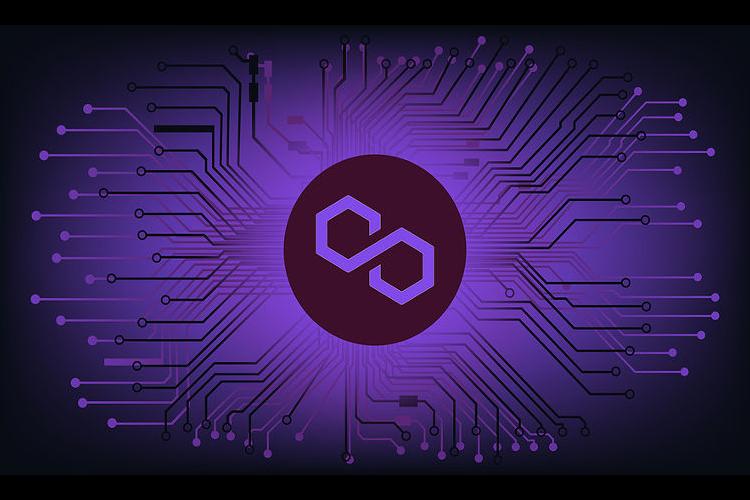Polygon Matic: what it is and how it works

Polygon is a kind of evolution of the project formerly known as Matic Network, born in 2017 with the mission of making Ethereum's infrastructure ready for mass adoption. Polygon was conceived by Jaynti Kanani, Sandeep Nailwal and Anurag Arjun, experienced Blockchain developers and a business consultant. Polygon was born to be an entire platform designed to launch interoperable Blockchains, i.e. it was basically created to solve 2 problems of Ethereum:
- scalability
- and interoperability
In fact Polygon allows Ethereum to interact with other chains just through its own Blockchain. Polygon chain intends to bring adaptability and scalability of alt chains together with:
- security
- liquidity
- and interoperability of Ethereum
Polygon wants to outperform the competition (Polkadot, Cosmos) by introducing Ethereum Virtual Machine (EVM) compatibility, making it a very attractive prospect for developers already working with the Solidity development language.
How Polygon Blockchain Works
Polygon's architecture can best be defined as a 4-layer system where the first two are optional, while the last two are mandatory. The layers are:
- Layer 1 : Ethereum
- Layer 2 : Security
- Layer 3 : Polygon Networks
- Layer 4 : Execution (or Execution Layer)
Let's go now to analyze them individually. Layer 1 : Ethereum Polygon networks can use Ethereum, the world's most secure Blockchain. This Layer is essentially a set of Smart Contracts that perform various functions such as:
- transactions
- scheduling
- staking and communication between Ethereum and the various Polygon chains
Layer 2: Security The security layer, on the other hand, provides a set of validators that periodically check the validity of other chains and thus allow the various Polygon networks to provide an additional layer of security. This function is normally implemented as a meta Blockchain that runs in parallel with Ethereum and is in charge of controlling functions such as:
- rewards
- registration
Layer 3: Polygon Networks The Polygon Networks layer is the ecosystem of Blockchain networks built on Polygon. Each of these has its own community and is responsible for:
- transaction collection
- local consensus
- and the production of blocks
Layer 4: Execution (or Execution Layer) This layer interprets and executes transactions that are agreed upon and included in Polygon networks. The execution layer is Polygon's Ethereum Virtual Machine (EVM) implementation used to execute smart contracts.
Polygon Internet of Ethereum
To solve Ethereum's scalability problem, Polygon offers a number of currently active scaling architectures such as:
- Plasma
- Rollups zk
- Matic PoS
Polygon Plasma
Plasma, which is a layer-2 solution for Ethereum, provides a framework to build Decentralized Applications (dApps) off the chain they have fortified:
- security
- scalability
- and speed
The Plasma framework is one of the driving developments behind the mass adoption of Blockchain technology. It is primarily used as a bridge.
Polygon Rollups ZK
With Rollups ZK (Zero- Knowledge), the Polygon team has developed a feature set that solves Ethereum's scalability by bundling a large number of off-chain transactions into a single transaction.
Polygon Matic PoS
Matic PoS is Polygon's main blockchain that adds a Proof-of-Stake security layer to the Blockchain compared to simple Ethereum which is Proof-of-Work based.
>> Proof of Stake VS Proof of Work <<
Blockchains launched on the Polygon network are based on its Proof-of-Stake (PoS) sidechain, which leverages a network of validators outside the blockchain and later finalizes transactions on Ethereum's main network. Doing so takes a lot of work off the main network, thus resulting in less network congestion, higher transaction speeds, and lower gas fees. All of the above scaling mechanisms are built to increase Ethereum's transaction throughput without sacrificing network security and user experience.
Ethereum Blockchain: the largest multi-chain system
Ethereum is already the world's largest multi-chain system that has grown and evolved to host a multitude of chains that are all adding value and strength to the Ethereum ecosystem. These chains include:
- + of 150 EVM-compatible networks
- Hundreds of enterprise blockchains
- Dozens of Layer 2 implementations
The downside of all this is that Ethereum's infrastructure is currently unstructured and its system is perhaps slightly chaotic.
Polygon SDK
Polygon SDK aims to transform Ethereum into a full-fledged multi-chain system, introducing structure to this organic ecosystem and providing a framework for Ethereum multi-chain to grow further and faster. Polygon SDK aims to support building and connecting 2 main types of solutions:
- Secured Chains (Layer 2 solutions): Blockchains that require the highest level of security, such as Startups, young projects and communities that are unable to establish a sufficiently decentralized and secure validator pool
- Stand Alone Chains: the main examples of such chains are sidechains and different types of enterprise chains. They offer the highest level of independence and flexibility, with the tradeoff of a lower level of decentralization and security.
MATIC Token
MATIC is an ERC-20 Utility token that is used to power the Polygon network. It functions as the main exchange currency of the network and as a financial incentive for those who want to contribute to the growth of the ecosystem. It is also used as collateral in staking that allows users to participate as validators or delegates in Polygon's consensus mechanism to validate transactions in exchange for rewards paid in MATIC tokens. MATIC has a maximum supply of 10 Billion tokens. There are currently approximately 7.5 billion MATIC tokens in circulation. Conclusions In the coming months, we will likely see most existing projects built on Ethereum begin to move exclusively to L2 (Layer 2) solutions like Polygon in order to reduce transaction prices and increase speed. Scaling solutions like Polygon will likely continue to be increasingly attractive as network congestion continues to be an issue on the Ethereum Blockchain.